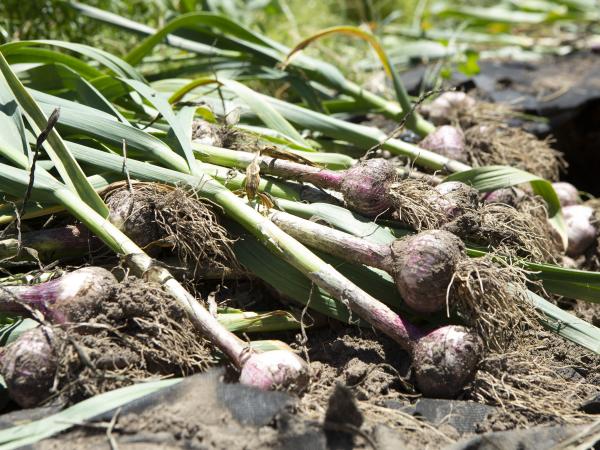UTS is facilitating the circular economy by processing 50 tonnes of food waste on-campus per year into soil conditioner, sent to local farming communities to grow garlic, which returns as food to UTS and other Sydney outlets.
Project summary
This circular economy project is a collaboration involving students, academic staff from multiple disciplines, campus operations, and industry partners.
Over three years they worked together to create a functional circular economy model sending nutrients from food waste generated at UTS back to peri-urban communities to support local small-scale agriculture.
Food waste is collected around campus in dedicated bins in the kitchens and food retail outlets. Around 50 tonnes per year is processed on campus in two food waste dehydrator machines to produce soil conditioner. This is collected every week and sent to the garlic farm west of Sydney.
The system demonstrates to everyone involved, including the food retail outlets, waste managers, staff, students and the broader community, that genuine circular resource recycling is achievable and viable.
The key benefits of the project include:
- 50 tonnes of food waste annually diverted from landfill
- Less waste transport because the soil conditioner is processed on campus
- Collaborative model, involving industry, government and community partners
- Achieving a genuine, working, Circular Economy initiative
The project is scalable and could be replicated in similar large organisations that generate large volumes of food waste.
For more information, read our news article on turning food into waste.
Project timeframe
2018 – ongoing
SDG targets addressed by this project
Responsible consumption and production:
12.5 – By 2030, substantially reduce waste generation through prevention, reduction, recycling and reuse.
12. 6 - Encourage companies, especially large and transnational companies, to adopt sustainable practices and to integrate sustainability information into their reporting cycle.
Key contacts
Key collaborators
Dena Fam, Institute of Sustainable Futures




